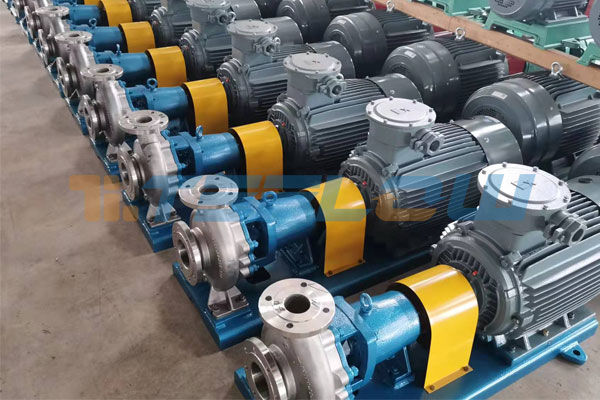Centrifugal pumps are widely used in many industries for various applications, including pumping water, chemicals, and other liquids. A horizontal centrifugal pump is a type of centrifugal pump that is designed to move liquids through a horizontal pipe. In this article, we will discuss how a horizontal centrifugal pump works and its components.
Working Principle of a Horizontal Centrifugal Pump A horizontal centrifugal pump works by using a spinning impeller to create a low-pressure area in the pump's center. This low-pressure area causes the liquid to be pulled into the pump's center and then propelled out through the pump's discharge port. The impeller spins at high speeds, creating a centrifugal force that moves the liquid towards the discharge port.

Components of a Horizontal Centrifugal Pump A horizontal centrifugal pump consists of several components, including the impeller, casing, shaft, bearings, and mechanical seals.
-
Impeller The impeller is the central component of a horizontal centrifugal pump. It is typically made of metal and is shaped like a wheel or propeller. The impeller spins on a shaft that is driven by an electric motor or an engine. As the impeller spins, it creates a low-pressure area at the center of the pump, which pulls the liquid into the pump's center and then propels it out through the discharge port.
-
Casing The casing is a hollow structure that encloses the impeller. It is typically made of metal and is designed to direct the liquid towards the impeller. The casing also helps to contain the liquid and prevent leaks.
-
Shaft The shaft is a long, straight rod that connects the impeller to the electric motor or engine. The shaft is typically made of metal and is designed to withstand the high speeds and forces created by the spinning impeller.
-
Bearings Bearings are used to support the shaft and reduce friction between the rotating parts of the pump. They are typically made of metal and are lubricated to reduce wear and tear.
-
Mechanical Seals Mechanical seals are used to prevent leaks between the rotating and stationary parts of the pump. They consist of two flat surfaces that are pressed together to create a tight seal. The seal is typically made of carbon or ceramic, and the stationary part is typically made of metal.
Advantages of Horizontal Centrifugal Pumps
-
High Efficiency Horizontal centrifugal pumps are highly efficient, meaning that they require less energy to move liquids than other types of pumps.
-
Easy Maintenance Horizontal centrifugal pumps are relatively easy to maintain, as their components are readily accessible and can be easily replaced.
-
Wide Range of Applications Horizontal centrifugal pumps can be used in a wide range of applications, including water supply, sewage treatment, chemical processing, and oil and gas production.
Disadvantages of Horizontal Centrifugal Pumps
-
Limited Suction Head Horizontal centrifugal pumps have a limited suction head, meaning that they are only effective at pumping liquids from relatively shallow depths.
-
Limited Discharge Head Horizontal centrifugal pumps also have a limited discharge head, meaning that they are only effective at pumping liquids to relatively low heights.
-
Not Suitable for Viscous Liquids Horizontal centrifugal pumps are not suitable for pumping highly viscous liquids, such as crude oil or molasses, as these liquids can cause the impeller to clog.
In conclusion, a horizontal centrifugal pump is an essential tool for many industries, including water supply, sewage treatment, chemical processing, and oil and gas production. The pump works by using a spinning impeller to create a low-pressure area, which pulls the liquid into the pump's center and then propels it out through the discharge port.





 +86 18130251359
+86 18130251359 teflowpumps@tlpumps.com
teflowpumps@tlpumps.com








 +86+0563-5093318
+86+0563-5093318
